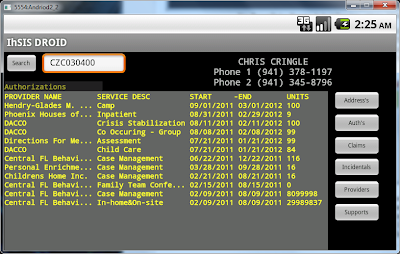Promises broken....
I am now a 50 year old manager of a small piece of a very large company that purchased us about 1 year ago. Been into computers since grade school in the late 70's, having spent years working in the field, building, fixing, installing, selling, teaching, gaming, programming and now consulting on all the aforementioned topics. Computing life is good.
Last month I posted about the purchase of my new Android based LG Thrill and remarked how I was going to write that next flashlight application that everybody would want. (There are hundreds already out there). In reality I wanted to get into the Android development paradigm because I found the IOS development environment restrictive in various ways. ( You need a Mac... You need to use Code... Natively you need to learn ObjectC). To that end I have installed the latest bits of development requirement on my windows 7 laptop, and started toying around with the Java based development environment for the Android device environment. I found the initial Hello World style of application easy enough. I also found the task to deploying the application refreshingly simple. Code signing and certifying using the development environments own sample certificate to sign the apk package and I was able to just send to blue tooth device on my laptop to place it on my phone. Once the file was sent to the phone, the phone itself asked what I wanted to do with the file. I selected to install it where Android dutifully did so and the test app appeared in my set off apps. Touch it and it runs just as you might expect.
 |
| Mono Droid Main web presence... Wonders did my eyes behold.... |
 |
| New Project Dialog Showing Android Templates added to VS2010 |
 |
| Start Emulator Dialog |
 |
| Emulated LG Thrill running my test IHSIS-DROID application actually connecting to my Web service Layer. |
 Stats...
Stats...I tend to be rather short with people and process that I consider overly burdened with steps and detail. In other words I hate 'ANAL' people. Folks who have their list of steps for everything, and follow those steps with religious zeal, bordering on fanaticism. You know the folks, the ones who want the results of report x ordered the same way each and every time as and example. Such a person calls out the national guard when a software change presents output in a different order. Such a person questions the validity of such output simply because two rows of output are swapped. I used to think of this kind of behavior as a bad thing, wasteful of precious time that I have never had enough of. Sweating the small stuff, I felt sorry for these folks, while being annoyed with them in my interactions. These folks are everywhere after all.
It's been an excruciatingly long set of months leading up to this post. All of it spent in death march style months on two tasks that's have consumed my every waking moments attention. Looking over the past few years I am struck by one overriding thought, "What's new?".
Location:36000 feet en-route to Vegas
Have had a very very busy couple of months. The pressure of impossible schedules and deadlines that seem to come faster than they go have kept me away from this small dusty corner of the inter web for some time. The 80 hour 7 day weeks all bleeding one into the other leading to the sudden awareness of the holidays come and gone, a new year now well underway. This current road trip started on this past Sunday with a one way rental and drive through Allentown Pa. To pick up a co-worker and continue on to Erie Pa. That was to be two days then hoof it to Pittsburg and fly to Tampa. The main source of my last few months labors.